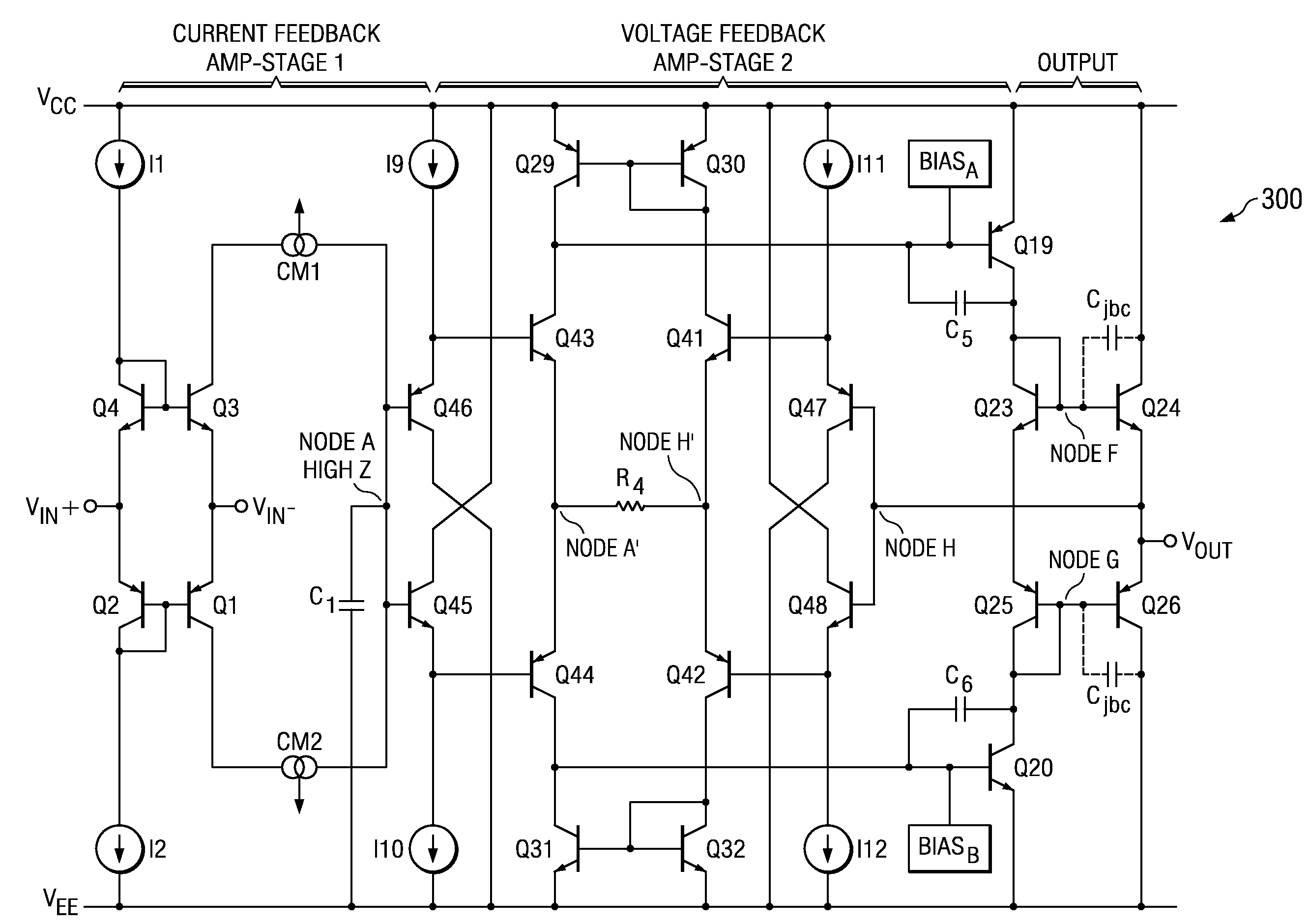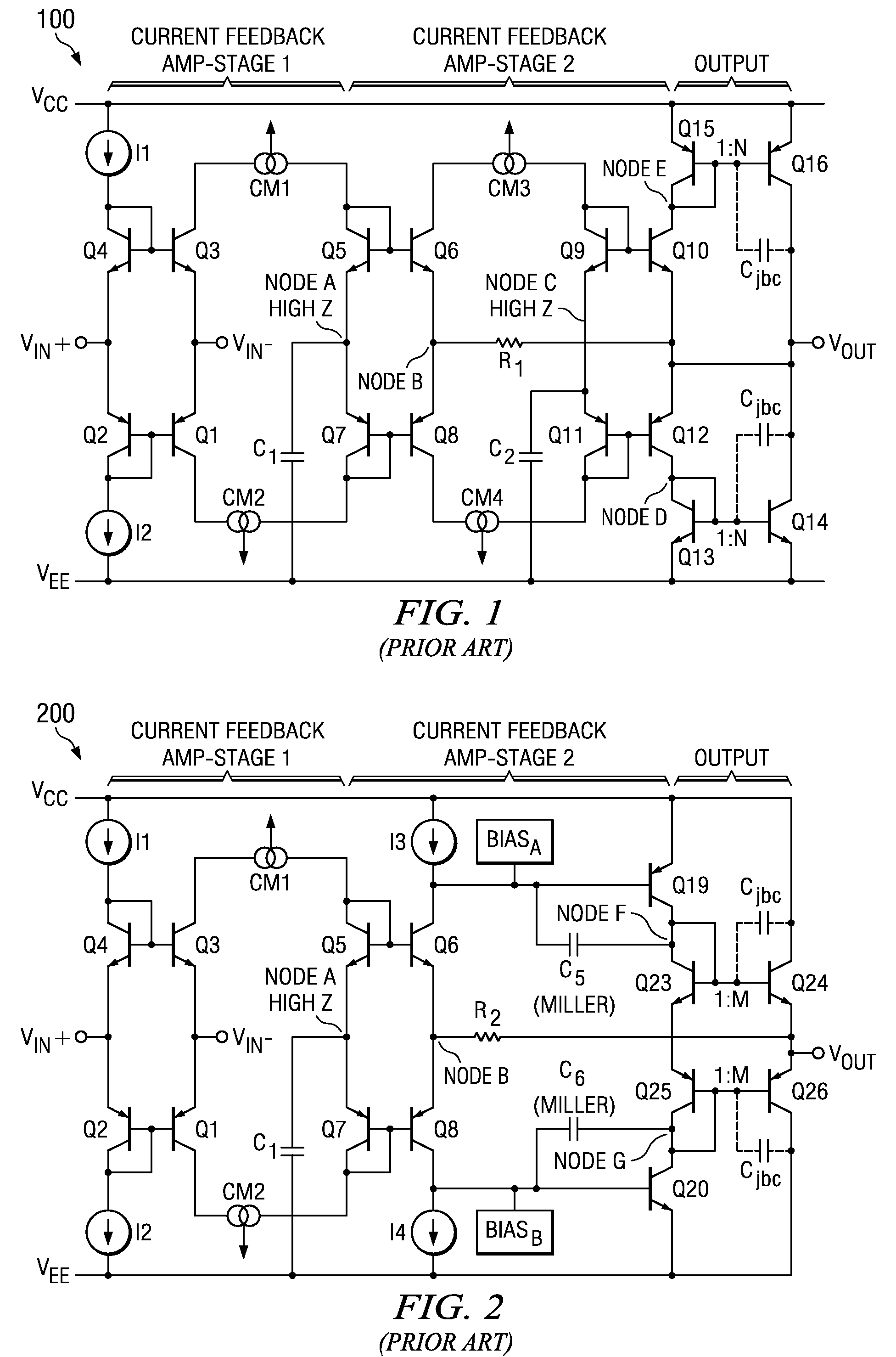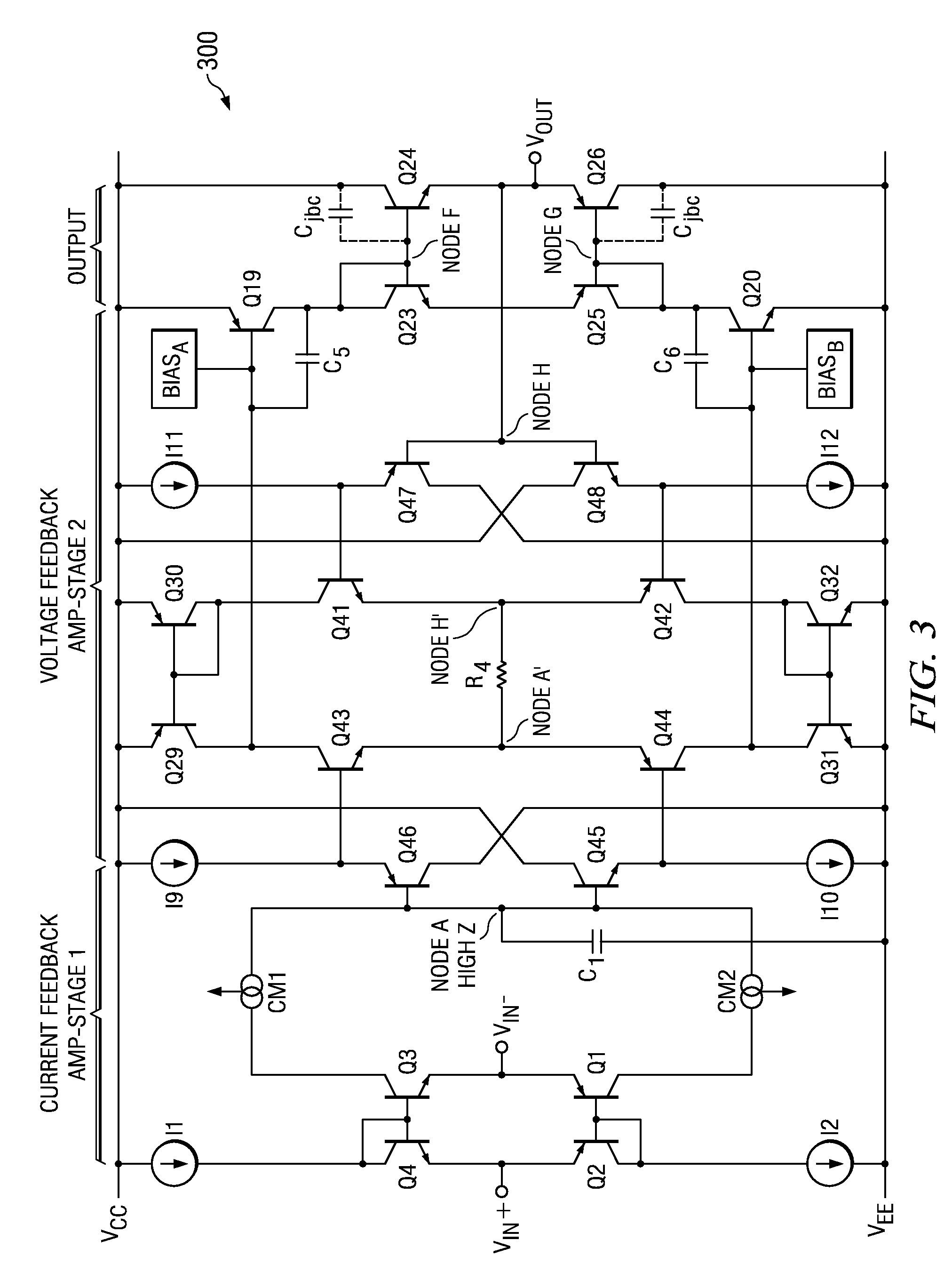High efficiency linear amplifier
a linear amplifier and high-efficiency technology, applied in the field of electrical systems, can solve the problems of limited performance of operational amplifiers, affecting the overall performance of systems, and limiting the maximum bandwidth of amplifiers, so as to achieve high linearity, wide bandwidth, and high gain.
- Summary
- Abstract
- Description
- Claims
- Application Information
AI Technical Summary
Benefits of technology
Problems solved by technology
Method used
Image
Examples
Embodiment Construction
[0024]The making and using of the presently preferred embodiments are discussed in detail below. It should be appreciated however, that the present invention provides many applicable inventive concepts that can be embodied in a wide variety of specific contexts. The specific embodiments discussed are merely illustrative of specific ways to make and use the invention, and do not limit the scope of the invention.
[0025]Embodiments of the present invention will be described with respect to preferred embodiments in a specific context, namely an amplifier circuit configured with a voltage-feedback amplifier stage driving an output amplifier. A current-feedback amplifier stage can also be configured to drive the voltage-feedback amplifier stage. The invention may be applied to an amplifier arrangement to drive an xDSL line for which high gain, wide bandwidth, low distortion, high drive capability, and high efficiency are required; however, the application of the invention is not limited to...
PUM
 Login to View More
Login to View More Abstract
Description
Claims
Application Information
 Login to View More
Login to View More - R&D
- Intellectual Property
- Life Sciences
- Materials
- Tech Scout
- Unparalleled Data Quality
- Higher Quality Content
- 60% Fewer Hallucinations
Browse by: Latest US Patents, China's latest patents, Technical Efficacy Thesaurus, Application Domain, Technology Topic, Popular Technical Reports.
© 2025 PatSnap. All rights reserved.Legal|Privacy policy|Modern Slavery Act Transparency Statement|Sitemap|About US| Contact US: help@patsnap.com



